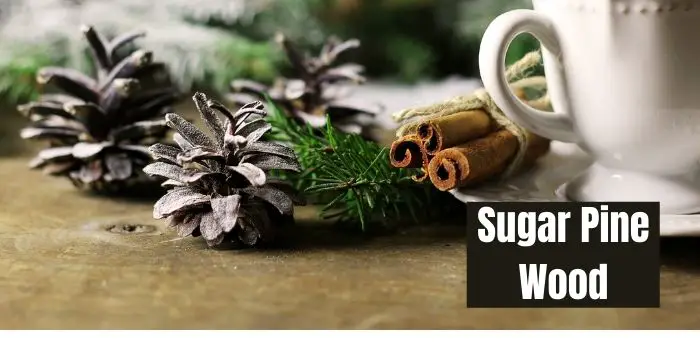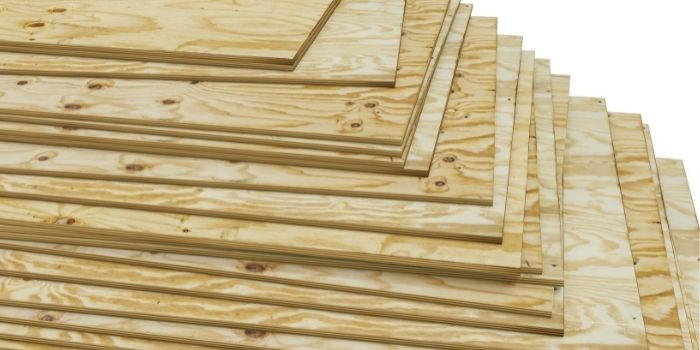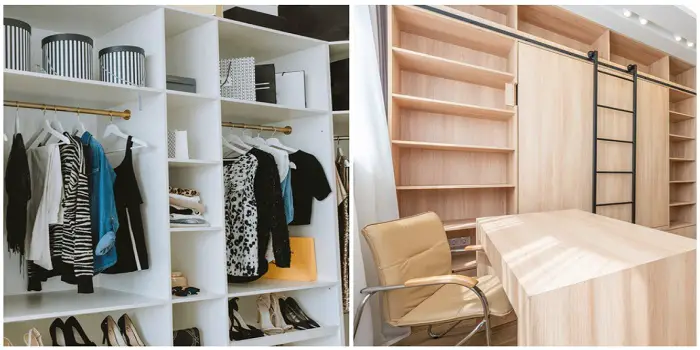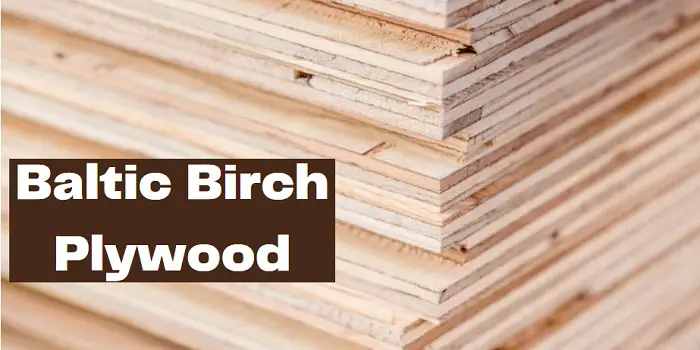
Sugar Pine is a type of evergreen that is quite popular and beloved.
David Douglas, the man who discovered the species, called it the most “princely” in its genus and has also been called the Queen of the Sierra and the King of the Pines.
Where does the name “sugar pine” actually come from?
The sweet sap of the tree gives it its name, with some people preferring it instead of maple syrup.
Native Americans used the sap for food and the tree for a variety of purposes, including bark and seeds for food, pitch for glue, small roots for baskets, and the gum of the tree to repair items like boats and arrowheads.
Even the bark and leaves were used for medical purposes.
Sugar Pine Wood
| Scientific Name: | Pinus lambertiana |
| Tree Size: | 130-200 ft (40-60 m) tall 3-5 ft (1-1.5 m) trunk diameter |
| Janka Hardness: | 380 lbf (1,690 N) |
| Type: | Softwood |
| Odor: | It has a faint, sweet odor when worked on |
| Specific Gravity (Basic, 12% MC): | .34, .40 |
| Common Uses: | Construction lumber, crates, boxes, and interior millwork |
What Makes Sugar Pine Wood So Special?
Older Sugar Pine trees date as far back as 500 years, and the wood has some of the highest quality and value around.
Color & Appearance
The heartwood of Sugar Pine lumber is light brown to slightly reddish, whereas its sapwood is a pale yellow to nearly white.
Grains you will find on this wood are straight and even along with medium to coarse texture.
There are also numerous evenly distributed end grains that make the wood look different and easy to work with.
Uses and Workability
The lumber is extremely popular thanks to its large, clear pieces that are quite stable and lightweight.
You’ll commonly find them used for constructing door frames, crates, boxes, organ pipes, and piano keys.
Though considered to be somewhat soft, the wood of the Sugar Pine is still quite hard which makes it ideal for working with both hand and machine tools.
Sugar Pine also glues and finishes very well when used for various woodworking projects.
However, do keep in mind that working with pine can sometimes cause certain allergic reactions to skin and breathing.
So, if you are allergic and are prone to show symptoms fast, you should not work with this type of wood. Or at least test a small area first to make sure you are not going to have any problems.

Where Can You Find Sugar Pines?
The natural habitat of Sugar Pine trees runs from Oregon to Mexico and then east toward Nevada.
The elevation ranges from about sea level to nearly 10,000 feet.
They are not commonly found in pure stands but are instead usually located in diverse plant communities.
You’ll find the densest populations on the western side of the Sierra mountains.
Appearance of Trees
Sugar pine is the largest and the tallest of the different pines and can grow as tall as 200 feet and more than 60 inches in diameter.
The Sugar Pine tree’s appearance and attributes are unmatched. They are defined by their long needles that are clustered to form small bundles.
They also feature horizontal, long branches that tend to droop a bit at the ends because of the weight of the cones.
What Affects the Health of the Sugar Pine Tree?
The population of Sugar Pines has been on the decline because of the pathogen white pine blister rust that causes cankers and kills both young trees and seedlings.
Sugar pine cone beetles can also cause as much as 93 percent loss of their seeds.
The mountain pine beetle is another pest that wears away the trees, often killing large groups of them.
There are other seed predators, including the Douglas squirrel, white-headed woodpecker, and other small mammals and birds that also snack on the seeds although they also help the species out by distributing the seeds further from the parent tree.
Though young Sugar Pine trees are susceptible to fire, mature Sugar Pines will usually survive a flame.
They are also less susceptible to attacks by disease and insects after a fire. The trees are not really drought tolerant, but they are ozone tolerant.
Their low drought tolerance is one of the reasons that the planting of Sugar Pines has not been very successful as it has with other pines.
So, for those who are planning to use sugar pine wood for various purposes, it’s not a very good idea compared to the other types of pine that are more readily available at a lower cost.
What are the Other Different Types of Pine Wood to Use?
As sugar pine alternatives, there are many different types of pine species you can find in the lumber store.
A few of the most commonly used include:
- Red Pine (Pinus resinosa)
- Shortleaf Pine (Pinus echinata)
- Longleaf Pine (Pinus palustris)
- Slash Pine (Pinus elliottii)
- Limber Pine (Pinus flexilis)
- Lodgepole Pine (Pinus contorta)
- Western White Pine (Pinus monticola)
- Eastern White Pine (Pinus strobus)
- Western Yellow Pine (Pinus ponderosa)
- Southern yellow pine (Pinus palustris)
The two most common are white pine and yellow pine. White pine is the softer of the two and is often used for indoor projects. Yellow pine is a bit harder and is better suited for outdoor use.
Final Thoughts
Sugar pine wood is a type of softwood commonly used in construction and furniture making. It is easy to work with and has a nice grain pattern. But with declining trees and sustainability issues with sugar pine, it is becoming more difficult to find.
So, other pine wood types are available to be used as a substitute. They are all very popular affordable wood for making cabinets and other woodworking projects. And the best thing is they can be stained or painted to match any decor.

Hi, I am Mark Garner a professional carpenter, woodworker, and DIY painter. I live in the small city of Peoria, Arizona as a semi-retired woodworker. I have started this blog with a simple motive to help you with my wood experience in this sector. If you like to know more about what I love doing and how it all got started, you can check more about me here.




